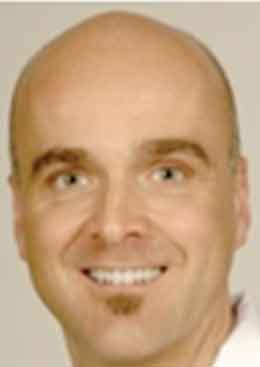Cardiology represents one of the single largest users of medical radiation [Citation1]. For cardiac electrophysiology, fluoroscopy remains the principal means of guiding catheter manipulation during ablation procedures, as well as guiding endocardial lead placement during the implantation of cardiac devices (e.g. pacemakers). The degree of radiation exposure resulting from the use of fluoroscopy varies depending on the type and sophistication of the procedure, and differs between device implantations and ablation procedures. Specifically, a diagnostic electrophysiology study is associated with an average effective dose of 3.2 mSv (range 1.3–23.9), which is the equivalent of 160 chest X-rays or 1.2 years of background radiation. In comparison, an ablation procedure is associated with 15.2 mSv [range 1.6–59.6 mSv; 760 chest X-rays or 5.7 years of background radiation], regular cardiac pacemaker or defibrillator implants with 4 mSv [range 1.4–17 mSv; 200 chest X-rays or 1.6 years of background radiation], and cardiac resynchronization therapy implant with 22 mSv [range 2.2–95 mSv; 1100 chest X-rays or 9.1 years of background radiation] [Citation2].
Recently, the short- and long-term health risks associated with ionizing radiation (IR) exposure have been extensively discussed [Citation3]. Biological effects of IR exposure can be categorized into the deterministic and stochastic effects. Deterministic effects are observed with exposure beyond which a threshold, with the severity proportional to the dose (for example, skin injury is observed with exposure beyond 3–5 gray, and cataracts beyond 2–10 gray). In contrast, stochastic effects, such as cancer or genetic/inheritable damage, are observed with probability of occurrence a function of the IR exposure dose. These stochastic effects have no threshold value for occurrence and the severity is unrelated to the exposure [Citation4]. For example, the overall risk of fatal malignancy caused by radiation increases by 0.05% for every 10 mSv of exposure (vs. a background fatal cancer risk of about 20%). Therefore, a catheter ablation procedure with an average radiation exposure of 15 mSv is associated with an excess (fatal and non-fatal) cancer risk of 1 in 750 men of 50 years old [Citation4]. As such, the necessity of reducing radiation exposure in the field of cardiac electrophysiology is essential [Citation2–Citation4].
Unfortunately, electrophysiologists remain heavy users of IR despite increasing knowledge of the risks, and the application of the recommendations to apply the ALARA principle (As Low As Reasonably Achievable – low dose-rate and pulse-rate fluoroscopy, collimation, adequate positioning of the X-ray detector and tube, and avoiding the use of steeply angulated projections) [Citation2,Citation4]. In recent years, novel technologies to reduce radiation exposure have emerged. These systems include the MediGuide™ non-fluoroscopic positioning system (St. Jude Medical Inc., St. Paul, MN, USA) and the Carto-Univu module (Biosense-Webster).
The MediGuide™ non-fluoroscopic positioning system consists of three components: a transmitter generating a 3D electromagnetic field, an electromagnetic field reference sensor attached to the patient chest, and a miniaturized coil sensor assembled within the catheter, guiding sheath, or guide wire. The transmitter is mounted on the fluoroscopy detector aligning the 3D electromagnetic field with the fluoroscopy field. It produces a set of magnetic fields in a range of frequencies between 10 and 15 KHz, with a magnitude of less than 200 μTesla. The reference sensor provides information about the spatial relationship between the chest wall and the fluoroscopy detector, thus providing accurate compensation for respiratory and patient movement. The miniaturized coil sensor is tracked non-fluoroscopically within the 3D electromagnetic field and projected onto the pre-recorded cine loops gated to a real-time ECG.
The CARTO-Univu Module is an additional tool of the CARTO-3 electroanatomic mapping system. This system consists of a registration plate mounted onto the three-coil location pad positioned underneath the patient table, which serves to align the CARTO-3 System to the conventional fluoroscopy, and a software module. The systems utilize the CARTO-3 electromagnetic navigation and current-based catheter localization system. Catheter position is determined by a location sensor embedded in the diagnostic or ablation catheter, which triangulates position based on the relative strength of the low-level magnetic field (5 × 10−6 to 5 × 10−5 Tesla) delivered from three separate coils in a locator pad mounted under the examination table. The Univu module then overlays the CARTO map (automatically panned and scaled to the body coordinate system) and catheter position onto a pre-recorded static fluoroscopy image or cine loop. In contrast to MediGuide™, this image is not gated to a real-time ECG or respiration.
It is important to note that both systems are tied to proprietary hardware (e.g. diagnostic and ablation electrophysiology catheters, as well as MediGuide™ enabled device implant tools such as a guidewire and fixed curve delivery sheath). Moreover, neither system is able to provide full visualization of the catheter beyond the tip (MediGuide™) or distal shaft and tip (CARTO-Univu). In the case of MediGuide™, the system currently requires hard integration into a single vendor fluoroscopy system, although a ‘portable’ table-mounted version (similar to the CARTO-Univu system) is in development.
Catheter ablation
Both of the MediGuide™ and CartoUnivu systems have been utilized for complex and simple EP ablation procedures, demonstrating significant incremental reductions in fluoroscopy exposure compared to conventional electroanatomic mapping.
Specifically, separate series by Akbulak et al. and Huo et al. demonstrated that the use of Carto-Univu for atrial fibrillation (AF) ablation procedures was associated with a significant decrease in fluoroscopy exposure: by 50% in Akbulak et al. (883 vs. 476 cGy.cm2; P < 0.001) and by 75% in Huo et al. (2,440 vs. 652 cGy.cm2; P < 0.001) without affecting procedure duration, complications, or jeopardizing long-term success [Citation5,Citation6]. Expanding on this information, Christof et al. examined the use of Carto-Univu for a wide range of arrhythmic substrates. In this series, the authors demonstrated significant relative reduction in radiation exposure: 60% for atrial flutter ablation (1,641 vs. 657 cGy.cm2, P = 0.002), 49% for AF (7,369 vs. 3,726 cGy.cm2, P < 0.001), 68% for atrial tachycardia (5,088 vs. 1,620 cGy.cm2, P < 0.001), and 41% for VT ablation (12,550 cGy.cm2 vs. 7,391 cGy.cm2, P = 0.017) [Citation7].
Similar results have been observed with the MediGuide system. In a non-randomized comparison, Malliet et al. demonstrated a 40% reduction in total radiation exposure (2,835 vs. 1,107 μGy·m2; P = 0.0001 for AF ablation, and 50% reduction for flutter ablation (1,651 μGy·m2 vs. 161 μGy·m2, P < 0.0001) with MediGuide compared with the conventional group [Citation8]. Schoene et al., in a prospective randomized study on atrial flutter ablations, demonstrated similarly significant reductions in fluoroscopy time (5.7 minutes vs. 0.3 minutes, P < 0.001) and radiation dose (418 vs. 17 cGy.cm2, P < 0.001) with the use of MediGuide compared with the conventional group [Citation9].
Moreover, Sommer et al. demonstrated a significant learning effect associated with the use of this technology in 375 consecutive patients undergoing AF ablation. They reported a significant decrease in fluoroscopy time, and fluoroscopy dose as the operators gained familiarity with the technology. Specifically, when the initial 50 cases were compared to the last 50 cases the fluoroscopy time decreased from 6.0 (4.1–10.3) minutes to 1.1 (0.7–1.5) minutes, and radiation dose decreased from 2,363 (1,413–3,475) to 490 (230–654) cGy.cm2, (P < 0.001 for both) [Citation10].
In each of these series, it is important to note that the use of MediGuide or Carto-Univu had no effect on procedure times, periprocedural complications, or ablation success.
Device implants
Radiation exposure during device implant procedures can be substantial. Compared to a conventional pacemaker or implantable cardioverter defibrillator implantation, the IR exposure during cardiac resynchronization therapy may be four times greater. Part of this relates to the prolonged nature of these complicated procedures, combined with technical limitations that limit the utility of standard procedural methods to contain radiation exposure. Specifically, due to the location of the operative field, the operator is necessarily close to the IR source. Moreover left-oblique projections are often required for coronary sinus cannulation and/or left ventricular (LV) lead placement. Given these complexities, it would be expected that non-fluoroscopic imaging with the MediGuide system could have a large impact during these implant procedures. To this end, this is what was demonstrated. Compared to conventional implant procedures, Thibault et al. demonstrated a 66% reduction in total IR exposure (median 769 μGy·m2 vs. 2,608 μGy·m2, P < 0.001) [Citation11]. When broken down to its component steps, this was primarily driven by a >90% reduction in IR exposure required to cannulate the coronary sinus (median 80 μGy·m2 vs. 922 μGy·m2, P < 0.001). Conversely, a lesser reduction in IR dose was noted for LV lead placement (median 330 μGy·m2 vs. 737 μGy·m2, P = 0.059), which was limited by the unavailability of the current MediGuide-enabled LV lead implantation tools (specifically, the implanted leads are not equipped with a sensor). Interestingly, despite being a novel technology and skill-set, a non-significant trend toward shorter procedure duration was observed (120 vs. 138 minutes with non-MDG, P = 0.088). Similar results were noted in the series by Doring et al., where using a matched comparison with conventional CRT device implantations the authors demonstrated a significant reduction in fluoroscopy time (median 8.0 vs. 4.5 minutes; P = 0.016) and radiation dose (median 603–338 cGy.cm2, P = 0.044) [Citation12].
Conclusion
The use of novel non-fluoroscopic catheter tracking systems represents a paradigm shift in the field of electrophysiology.
Financial and competing interests disclosure
L. Macle has received research grants and speaker honoraria from St.Jude Medical and Biosense-Webster. B. Thibault has received speaker honoraria from St.Jude Medical. J. Andrade has received speaker honoraria from Biosense-Webster. The authors have no other relevant affiliations or financial involvement with any organization or entity with a financial interest in or financial conflict with the subject matter or materials discussed in the manuscript apart from those disclosed.
Additional information
Notes on contributors



Laurent Macle



Bernard Thibault



Jason G. Andrade
References
- Cousins C, Miller DL, Bernardi G, et al., and International Commission on Radiological P. ICRP PUBLICATION 120: Radiological protection in cardiology. Annals of the ICRP. 2013;42:1–125.
- Picano E, Vano E, Rehani MM, et al. The appropriate and justified use of medical radiation in cardiovascular imaging: a position document of the ESC associations of cardiovascular imaging, percutaneous cardiovascular interventions and electrophysiology. Eur Heart J. 2014;35:665–672.
- Hill KD, Einstein AJ. New approaches to reduce radiation exposure. Trends Cardiovasc Med. 2016;26(1):55–65.
- Heidbuchel H, Wittkampf FH, Vano E, et al. Femenia F and European Heart Rhythm A. Practical ways to reduce radiation dose for patients and staff during device implantations and electrophysiological procedures. Europace. 2014;16:946–964.
- Akbulak RO, Schaffer B, Jularic M, et al. Reduction of radiation exposure in atrial fibrillation ablation using a new image integration module: A prospective randomized trial in patients undergoing pulmonary vein isolation. J Cardiovasc Electrophysiol. 2015;26:747–753.
- Huo Y, Christoph M, Forkmann M, et al. Reduction of radiation exposure during atrial fibrillation ablation using a novel fluoroscopy image integrated 3-dimensional electroanatomic mapping system: A prospective, randomized, single-blind, and controlled study. Heart Rhythm. 2015;12:1945–1955.
- Christoph M, Wunderlich C, Moebius S, et al. Fluoroscopy integrated 3D mapping significantly reduces radiation exposure during ablation for a wide spectrum of cardiac arrhythmias. Europace. 2015;17:928–937.
- Malliet N, Andrade JG, Khairy P, et al. Impact of a novel catheter tracking system on radiation Exposure during the procedural phases of atrial fibrillation and flutter ablation. Pacing Clin Electrophysiol. 2015;38:784–790.
- Schoene K, Rolf S, Schloma D, et al. Ablation of typical atrial flutter using a non-fluoroscopic catheter tracking system vs. conventional fluoroscopy–results from a prospective randomized study. Europace. 2015;17:1117–1121.
- Sommer P, Rolf S, Piorkowski C, et al. Nonfluoroscopic catheter visualization in atrial fibrillation ablation: experience from 375 consecutive procedures. Circ Arrhythm Electrophysiol. 2014;7:869–874.
- Thibault B, Andrade JG, Dubuc M, et al. Reducing radiation exposure during CRT implant procedures: early experience with a sensor-based navigation system. Pacing Clin Electrophysiol. 2015;38:63–70.
- Doring M, Sommer P, Rolf S, et al. Sensor-based electromagnetic navigation to facilitate implantation of left ventricular leads in cardiac resynchronization therapy. J Cardiovasc Electrophysiol. 2015;26:167–175.
